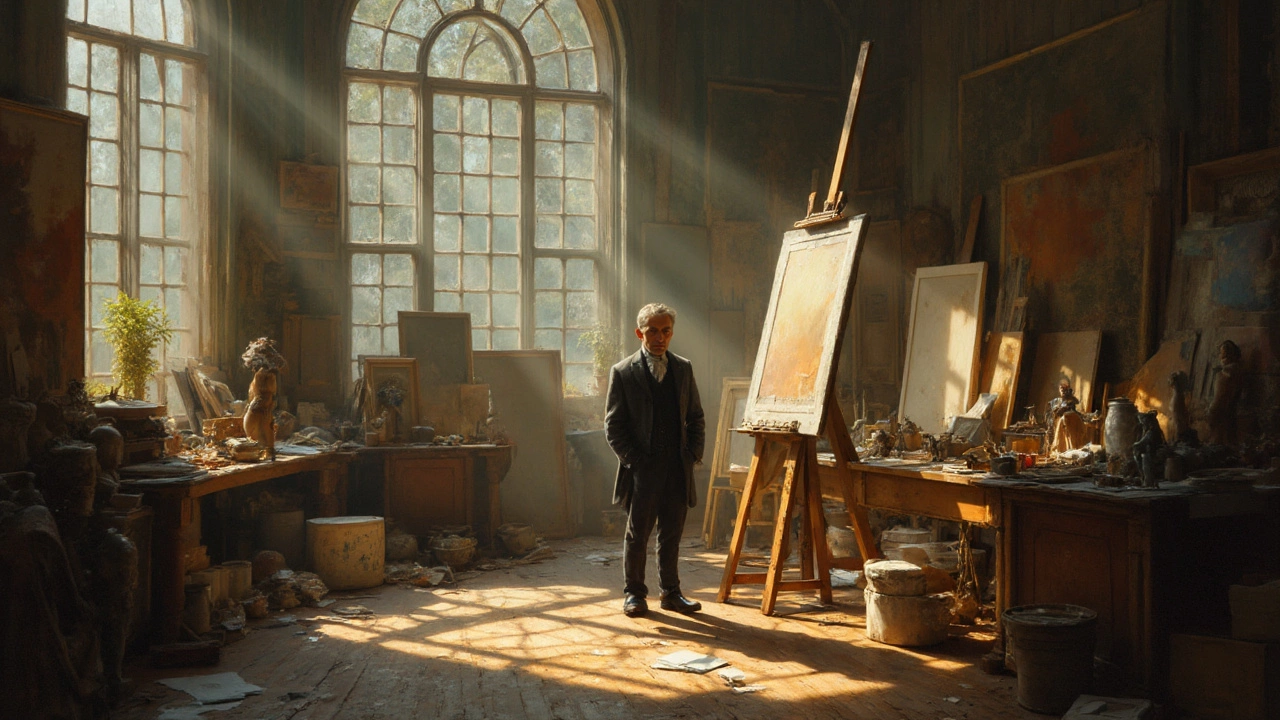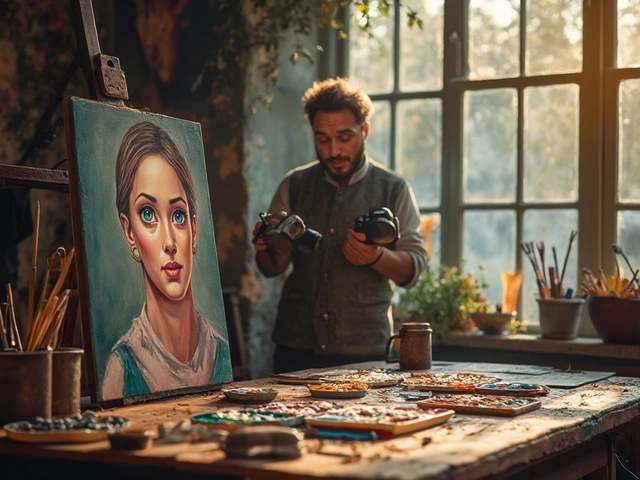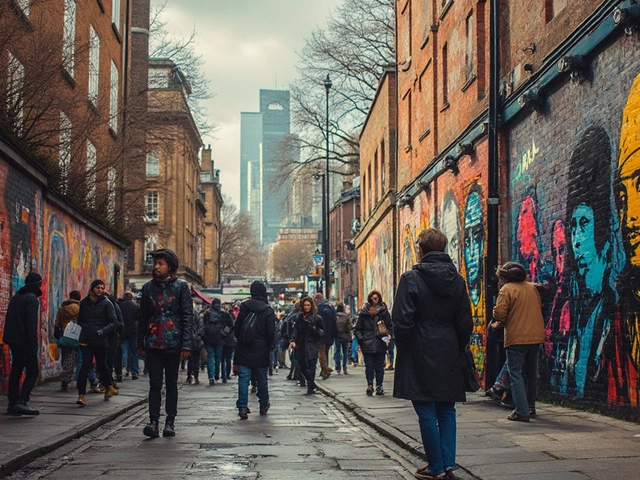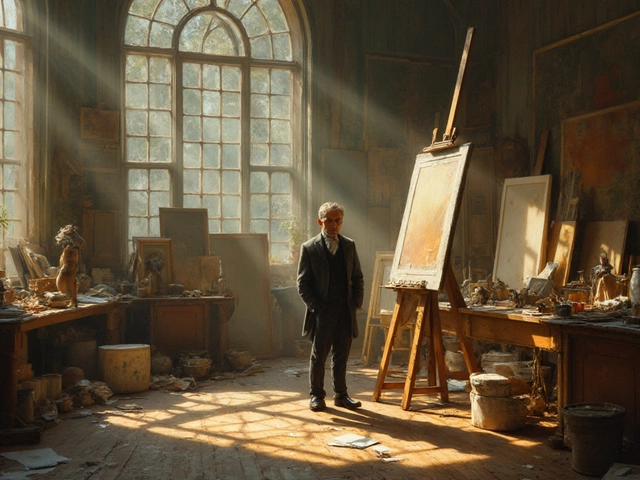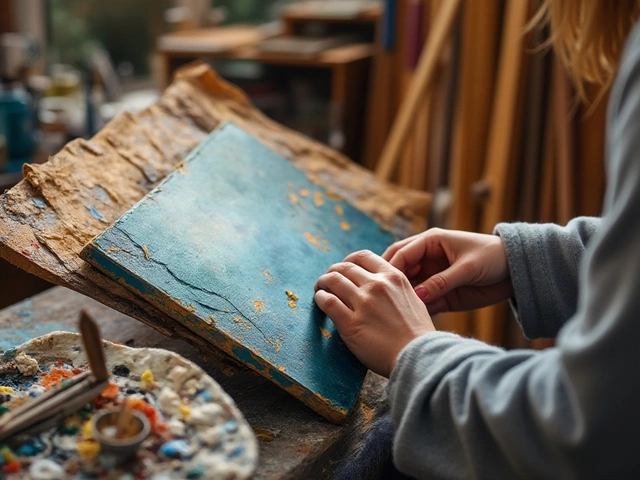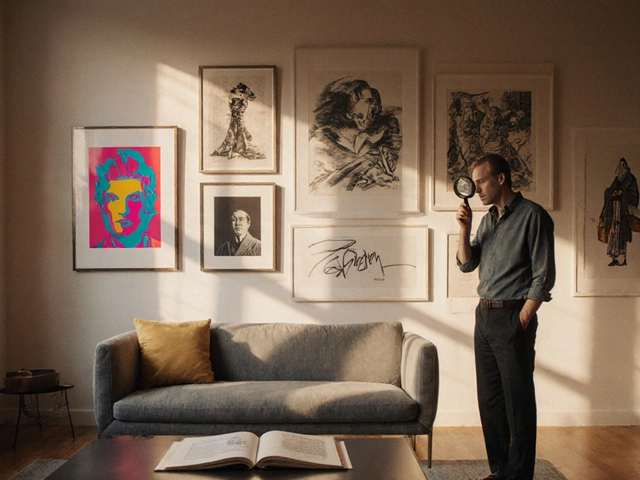Ever wondered who flipped the switch and set modern art into motion? Many lift their brushes to Pablo Picasso, often hailed as the godfather of modern art. Back in the early 20th century, he didn’t just break the rules—he practically redefined them. Picasso's unique style and thirst for innovation carved a path that many artists still tread today.
Think of Picasso as the guy who threw a splash of cold water on a sleepy art world back then. Cubism, one of his most renowned contributions, shattered the idea that art needs to mimic real life. Instead, he created art that was about expression and perception. It's not just about paint; it's about how you twist your mind around the concepts.
But Picasso wasn't just about shaking things up in his own little corner. His influence went way beyond the canvas. His ideas reverberated through design, sculpture, and even literature. It's like he planted a seed that grew and branched into so many different forms. Imagine how your smartphone might look different without the bold ideas from the early modernists.
- The Trailblazer in the Art World
- Pioneering Techniques
- Impact Beyond the Canvas
- Legacy That Stands the Test of Time
The Trailblazer in the Art World
Imagine stepping into the early 1900s when art mainly meant realistic portraits and landscapes. Then, a young artist from Spain, Pablo Picasso, comes along and throws the book of traditional art out the window. He didn't just color outside the lines; he drew new ones—and sometimes, he ditched them altogether.
Picasso was pretty much a child prodigy. By the age of 16, he'd already shaken the art scene with a style that matured beyond his years. But it wasn't until he settled in Paris, the heart of the art world, that his journey as a modern art innovator took off.
One of his major turning points was developing Cubism around 1907. Alongside Georges Braque, they decided that perspective as a single point of focus was too limiting. They sliced and diced objects into geometric shapes, examining them from all angles simultaneously. This was revolutionary because it forced viewers to shift their perspective—literally and figuratively.
His work from this period wasn't just about showing off technical skill. It challenged the audience to think differently about how we see the world. Art was no longer just pretty pictures; it was thought-provoking, sometimes even puzzling. Picasso made people realize that art could have layers upon layers of meaning.
Picasso’s early ventures didn't stop with painting. He dipped his toes into ceramics, sculpture, and eventually multimedia, proving that a true trailblazer doesn’t stick to one path. His fearless experiments in art set the tone for future generations, encouraging artists to break out of molds and explore without fear.
By the time Picasso was in his prime, he had not only changed the game but had rewritten its rules. His work and attitude turned the art world on its head and kept it buzzing with possibilities long after he was gone.
Pioneering Techniques
When you think of groundbreaking moves in modern art, Pablo Picasso’s name is bound to pop up. This guy didn't just mess with traditional art rules; he obliterated them. One of the major shake-ups he brought was the creation of Cubism. Forget the polished reflections of reality; Picasso turned shapes into interpretations. Cubism reimagined subjects as geometric forms, throwing depth and perspective for a loop. It was like looking at reality through a shattered mirror, where every piece offers a different view.
But that's not all. Picasso wasn’t a one-trick pony. Alongside Georges Braque, he played around with different perspectives all at once, which was totally unheard of before. This approach let them depict objects from multiple angles within the same painting. Talk about seeing the forest and the trees, right?
Another cool thing he did was toy with collage, which he integrated into fine art. Picasso slapped bits of newspaper, fabric, and even wallpaper onto his paintings. Doing this, he blurred the lines between reality and art, adding a whole new dimension. It’s like he took a scrapbook and turned it into something utterly mind-bending.
Ever seen those African art influences in his work? That was Picasso again, drawing inspiration from beyond European art. He was fascinated by African masks and sculptures and their stylized, bold designs. This influence knitted together a bridge between different cultures and sparked a rich tapestry of artistic exchange.
Thanks to techniques like these, Picasso gave the art world a fresh set of eyes. He didn’t just change how we create art; he reshaped how we see the world around us. These pioneering techniques paved the way for countless artists, making Picasso a true boundary-pusher in the realm of modern art.
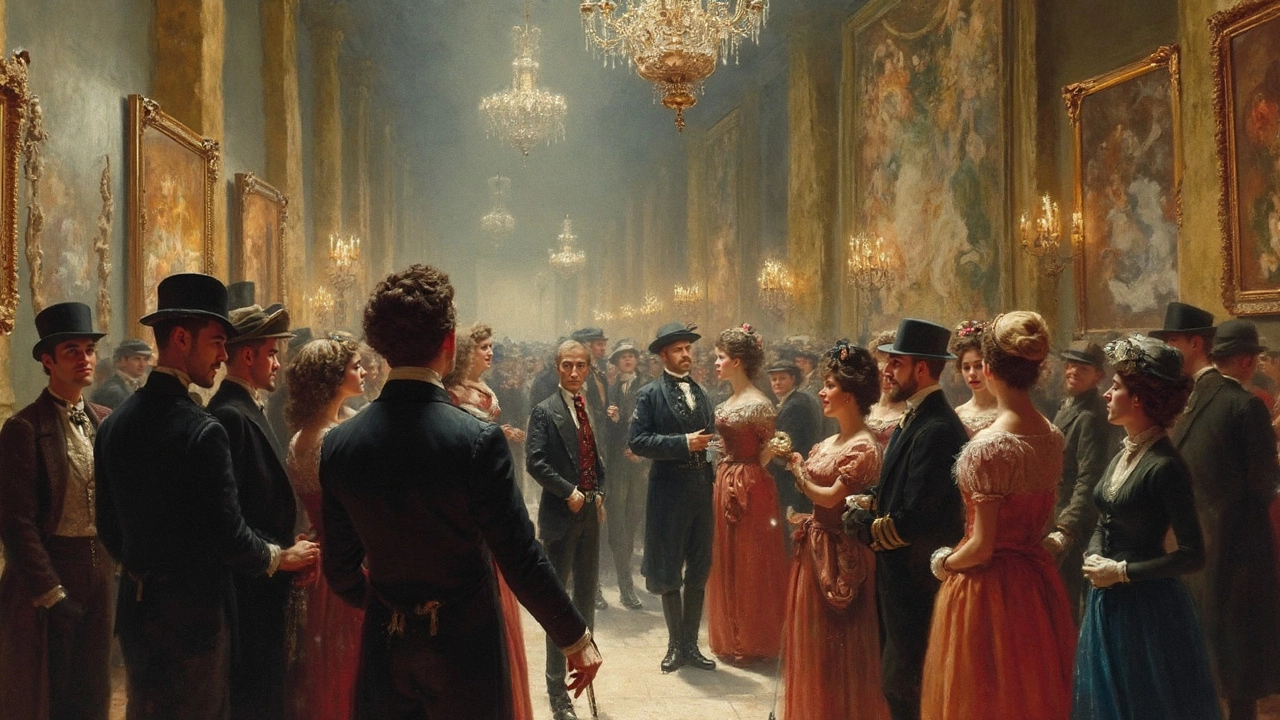
Impact Beyond the Canvas
Pablo Picasso’s genius wasn't boxed into frames. His influence spilled out across different realms, shaping how we view both art and the world around us. Ever noticed how modern architecture sometimes has those bold, sharp angles? That’s Picasso's cubist ideas sneaking into buildings. It's like his artwork was blueprinting a revolution in how space and form are conceived, impacting architects and designers alike.
Fashion designers couldn't stay immune to Picasso's flair either. His audacious colors and abstract designs inspired countless runway collections. It’s not an exaggeration to say that bold textile patterns owe a debt to his fearless exploration of shapes and hues. Modern art wasn’t just hanging on walls anymore; it was walking down the street.
Then there’s the music scene. Yes, even musicians felt the waves of Picasso's creativity. Just like his art, music started breaking traditional rules around this time, evolving into something more expressive and less rigidly structured. It wasn't just about filling space with sound, but weaving stories in new forms—mirroring how Picasso brought emotions to life on the canvas.
Want a tidbit of trivia? Picasso's influence reached so far that in 1937, the iconic French sculptor and painter Fernand Léger once claimed, "Picasso’s impact on painting is something no one can ignore—it’s like a living sound." Léger's quote might seem a bit poetic, but it nails how Picasso echoed beyond paint into a wider fabric of creativity.
Picasso’s role as a godfather of the modern art movement means we still see his touch today, whether it's through an artist taking risks with bizarre shapes, clothing that challenges fashion norms, or even a cityscape that entices with its unique angles. His legacy is living, breathing, and evolving beyond the galleries we often associate with art.
Legacy That Stands the Test of Time
Pablo Picasso's legacy is anything but dusty museum talk. His influence is deeply embedded in how we see and create art today, touching both aspiring and established artists alike. You can see modern art with splashes of his daring creativity, everywhere from contemporary art museums to street murals.
Picasso’s knack for challenging norms hasn't faded—it’s grown. Just look at how today's artists play with forms and perspectives in ways that would've been unthinkable a century ago. Many art movements, like Surrealism and Abstract Expressionism, tip their hats to his pioneering ventures.
Additionally, Picasso’s art isn’t just boxed up in galleries. His style has seeped into the fabric of popular culture too. You find Picasso-inspired designs in everything from fashion to digital media. Even in education, his approach to multifaceted thinking and creativity is a go-to example for nurturing innovation.
- The auction world is a clear testament to his enduring popularity. Picasso remains one of the most sought-after artists, with his works fetching colossal prices.
- One of his paintings, "Les Femmes d'Alger," set a record by selling for $179 million in 2015.
While the art techniques and styles have shifted over time, the core of Picasso's daring and exploration remains a beacon. His legacy in the art history curriculum teaches us not just about art itself but about the courage to defy norms and the power of innovation.
| Painting | Year | Significance |
|---|---|---|
| Les Demoiselles d'Avignon | 1907 | Revolutionized modern art with its raw and abstract representation. |
| Guernica | 1937 | A stark anti-war piece that remains relevant in social and political discussions. |
In short, Picasso's impact on art history isn't just a line in a textbook; it’s a living, breathing influence that inspires creatives to this day. His spirit of transformation and rebellion has shown artists worldwide that true art knows no bounds.
